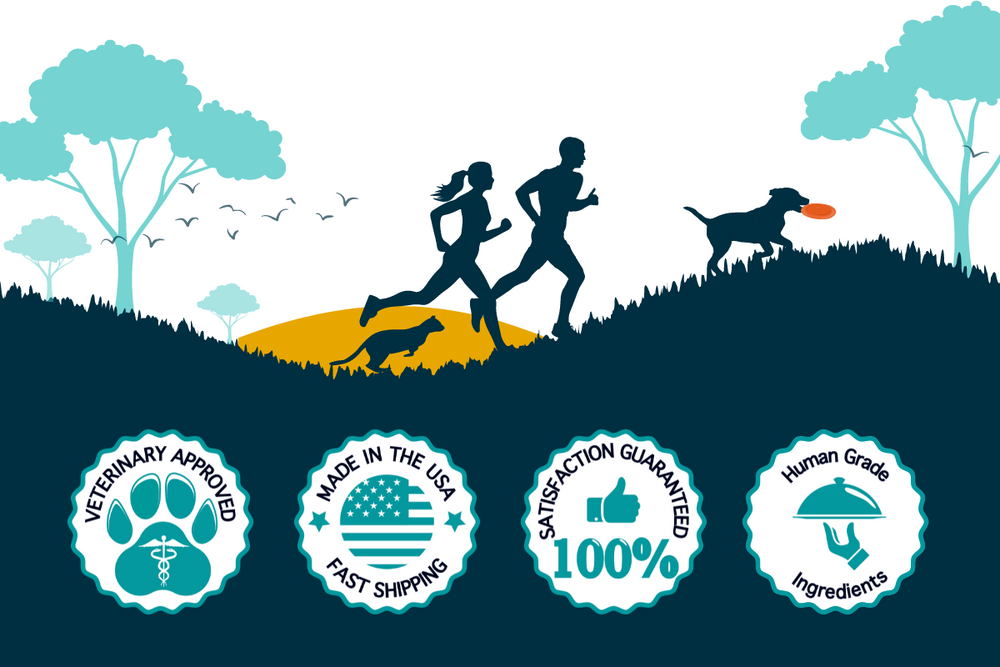- Weight and speed of your dog – A 40-pound dog running a 4.0-second time on the flyball course is running at around 17 mph, so when they hit a tug at full speed, it’s similar to doing a fast bench press of 125 pounds. Smaller or slower dogs won’t have as much force but can still twist their bodies or the handler’s shoulder and arm when they catch the tug.
- Type of tug – A short tug doesn’t provide much help in absorbing the force of your dog grabbing it, whereas a longer tug or a bungee tug may assist in helping you catch your dog more gently.
- How the dog catches the tug – Some dogs try to jump up to grab the tug, further changing the force profile on their bodies. Others slow down and turn to grab the tug, minimizing the strain on their neck and spine. Still others learn to come right at a tug held horizontally and grab it that way, braking on their front feet as they go for their toy. All of these different behaviors change the forces involved on the dog’s and handler’s bodies.
- Dropping vs. holding the tug – Dogs are used to accelerating and decelerating using their feet and legs, so if you drop the tug, they will use their bodies to stop more naturally instead of transferring force through the tug and the dog’s spine and your shoulder. Of course, this might not be perfect either, especially on rough or slick ground where they could slip or catch a foot on the terrain.

Forces at Play – Catching Your Dog on a Tug
In a previous post, I talked about how to play tug safely with your dog, but that only covered the activity when standing still! What if you play flyball, or do long recalls to a tug, and aren’t sure what the best way to catch your dog on a tug might be? Do you know what forces are at play when your dog races at you to grab a tug in your hand? What’s happening to your dog’s body? What’s happening to YOUR body? How can we mitigate these forces to make it safer for both you and your dog? The short video below provides an illustration of some of the forces present on dog and handler bodies as the handler catches a running dog on a tug in various ways. Much of this area hasn’t been studied scientifically yet, so we are left to look at the forces and mechanics on our own using video and some rough calculations. Though twisting the neck and spine may not be a problem if such movements occur sporadically, when a dog does it often (such as 20+ times per day at a flyball tournament), the chances for a repetitive stress injury or an acute injury may increase. And don’t forget, it’s not only the dog whose body is at risk but also the handler—as many of us can attest to after playing with a particularly big or enthusiastic dog! While the decision of how best to handle your own dog is up to you, consider these factors when training and working a recall to tug:




